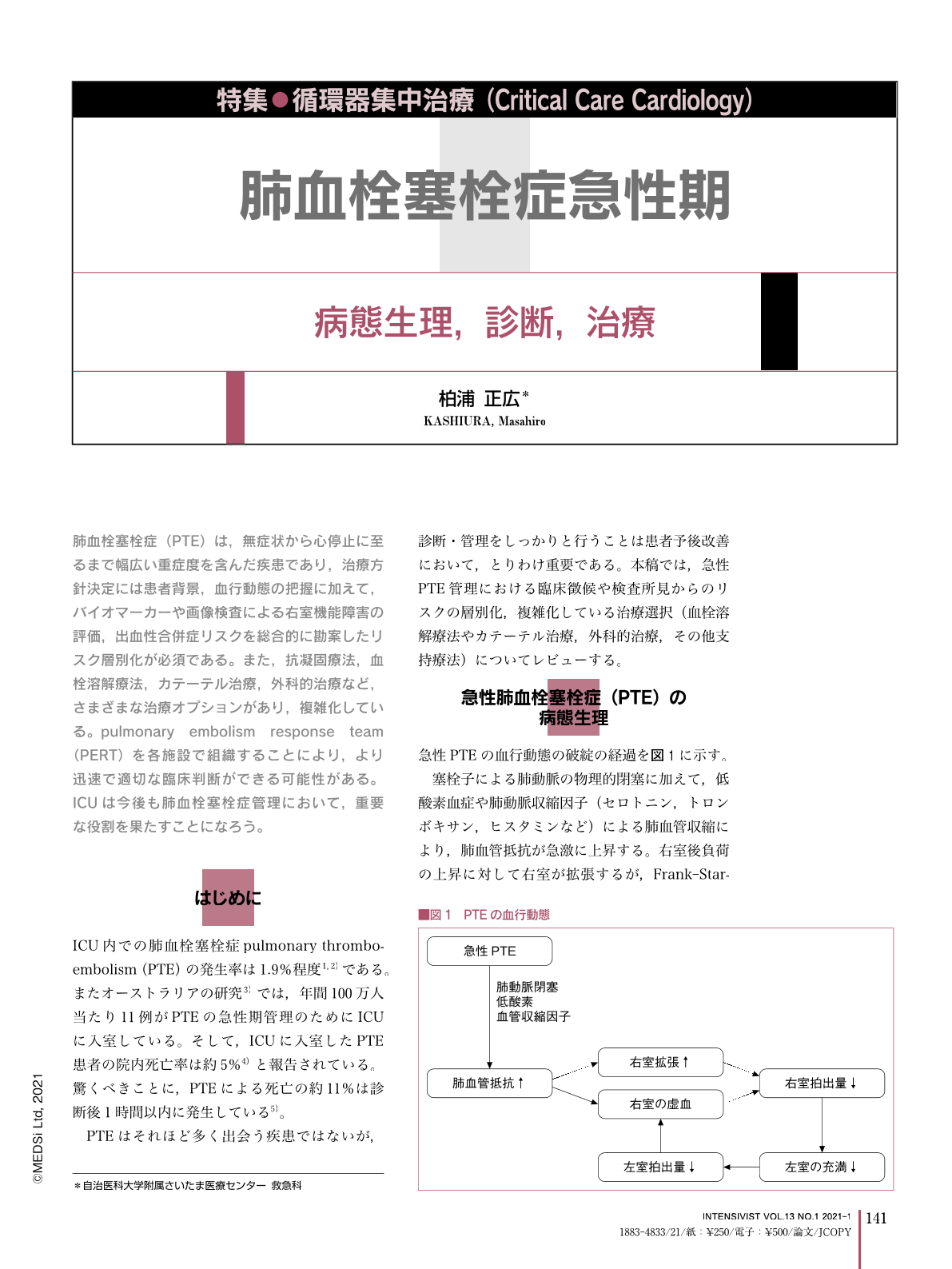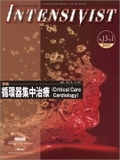Japanese
English
- 有料閲覧
- Abstract 文献概要
- 1ページ目 Look Inside
- 参考文献 Reference
肺血栓塞栓症(PTE)は,無症状から心停止に至るまで幅広い重症度を含んだ疾患であり,治療方針決定には患者背景,血行動態の把握に加えて,バイオマーカーや画像検査による右室機能障害の評価,出血性合併症リスクを総合的に勘案したリスク層別化が必須である。また,抗凝固療法,血栓溶解療法,カテーテル治療,外科的治療など,さまざまな治療オプションがあり,複雑化している。pulmonary embolism response team(PERT)を各施設で組織することにより,より迅速で適切な臨床判断ができる可能性がある。ICUは今後も肺血栓塞栓症管理において,重要な役割を果たすことになろう。
Pulmonary thromboembolism encompasses a wide range of severity, from asymptomatic to cardiac arrest. Physicians must stratify a patient's mortality risk based on patient background, hemodynamics, right ventricular function based on biomarkers and imaging findings, and risk of bleeding complications. The treatment of pulmonary thromboembolism is very complex with a variety of options including anticoagulation, thrombolysis, catheterization, and surgical treatment. The pulmonary embolism response team will facilitate physicians to decide on a prompt and appropriate treatment plan. The Intensive care unit continues to play a key role in the management of patients with pulmonary thromboembolism.

Copyright © 2021, MEDICAL SCIENCES INTERNATIONAL, LTD. All rights reserved.


